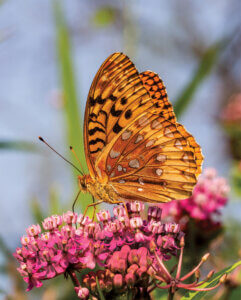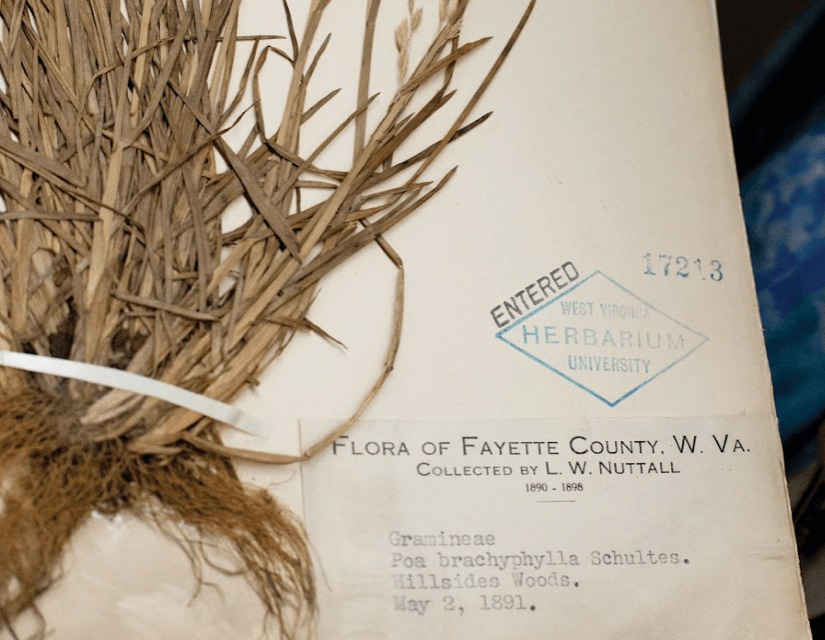
A unique repository on West Virginia University’s Morgantown campus serves as a comprehensive preserved record of the region’s botanical history.
This story was originally published in the January 2022 issue of Wonderful West Virginia.
To subscribe, visit wonderfulwv.com
Written by Holly Leleux-Thubron
Photographed by Carla Witt Ford
The Appalachian region is more than 400 million years old and considered one of the richest pockets of biodiversity in the world. Experts suggest that more than 2,000 unique species of flora call this region home. You can find most of them in the WVU Herbarium—a unique museum and library situated on the University’s campus in Morgantown.
The Herbarium at WVU isn’t the only one in the state. There are facilities with identical missions at Davis & Elkins College, Marshall University, West Virginia Wesleyan, and Fairmont State as well as small, private compilations. But the collection at WVU is the largest by far. It’s grown considerably from the early efforts of a highly regarded botanist named Charles Milspaugh, who worked for the University until 1894.
Where It All Began
The Herbarium was originally part of the WVU Agricultural and Forestry Experiment Station created by the University in 1888. Its first director was John Myers, a man who understood the importance of preserving botanical information and its role in creating better agricultural practices in the region. After all, WVU was established as a land-grant university with a central mission “to improve the lives of West Virginians, both through meeting higher education needs and through applied research.” Myers hired Milspaugh to help him study and record the state’s extensive plant life.
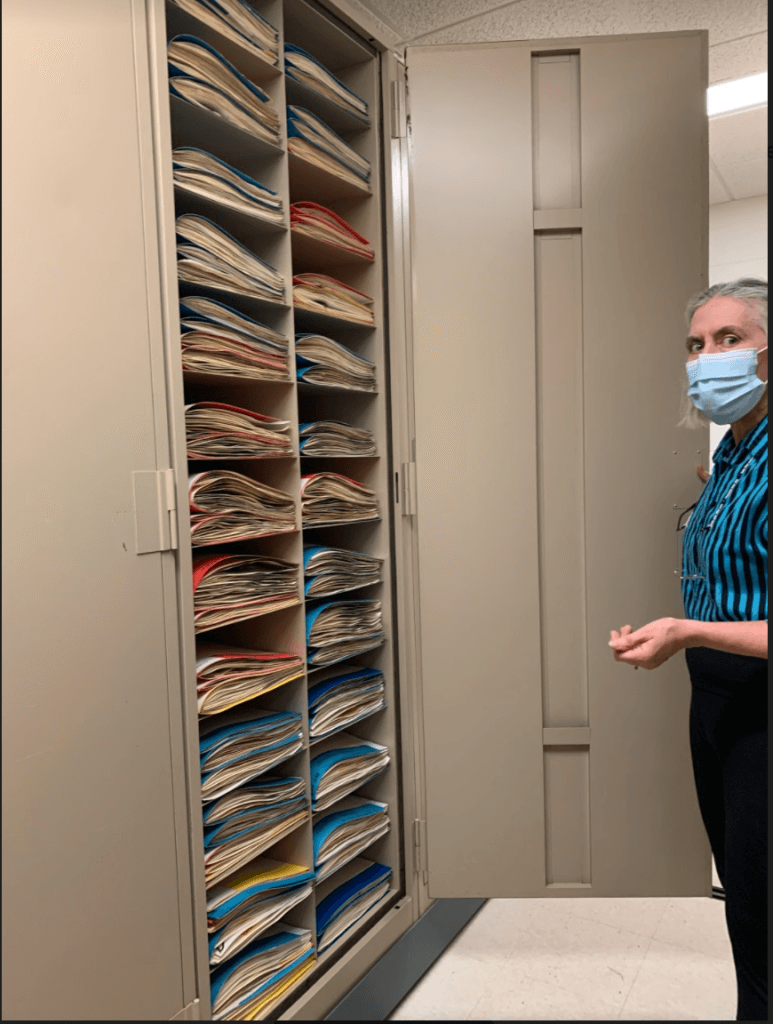
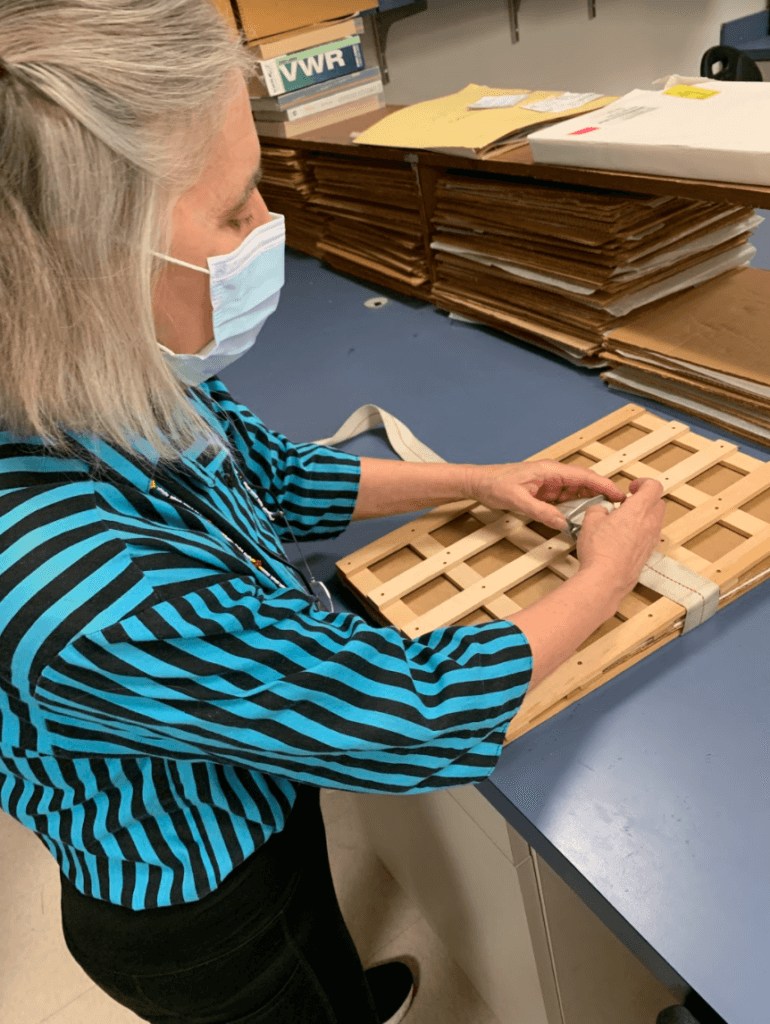
They began drying, pressing, and mounting specimens to archival paper and labeling them with critical taxonomic information. Milspaugh developed such an immense knowledge of West Virginia’s flora that he went on to publish the very first botanical encyclopedia of the state—The Living Flora of West Virginia—in 1913. In the book, he described more than 3,400 species, and the specimens he collected in his research were retained as the first seeds of the Herbarium collection. Other distinguished plant preservationists have taken the reins of the Herbarium in the years since Myers and Milspaugh, including renowned naturalist Earl L. Core.
The Herbarium Today
Donna Ford-Werntz works as the curator today and has led the Herbarium for the past 27 years. The modern collection is vast and varied, with more than 200,000 specimens—including 70,000 examples of vascular plant specimens and more than 25,000 bryophytes and lichens—and the largest assemblage of native West Virginia flora known to exist. In many instances, it holds the only surviving preserved specimens of rare and endangered native plants.
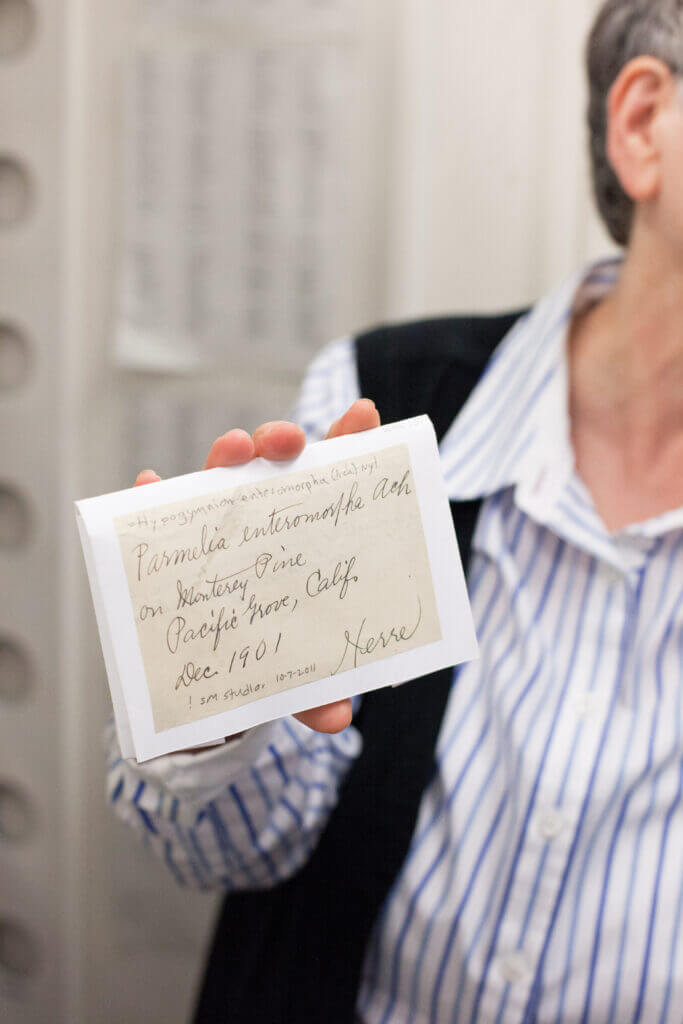
Ford-Wentz brought with her to West Virginia a lifelong fascination with plants and an impressive track record of experience, having worked in herbariums since she was a teenager. As a youngster, she was a member of the Cincinnati Zoo and Botanical Gardens’ Junior Zoologist program when a biologist there recognized her interest in plants and set her up with a volunteership at the herbarium. Before that, she says, she had no idea what an herbarium was. “When I graduated from high school, I knew I wanted to be a botanist. I had been working in the herbarium that whole time, and it was just a matter of finding my home,” she says. “After a stint at the Missouri Botanical Garden in St. Louis, I found home here at WVU.”
The Herbarium complex fills 1,670 square feet with 125 stacks full of color-coded specimen folders in temperature-controlled rooms. The blue folders contain West Virginia species and make up about 60 percent of the collection. The yellow folders are exotic—specimens from all over the world, and the red folders contain plants from other states. Together they make up the remaining 40 percent.
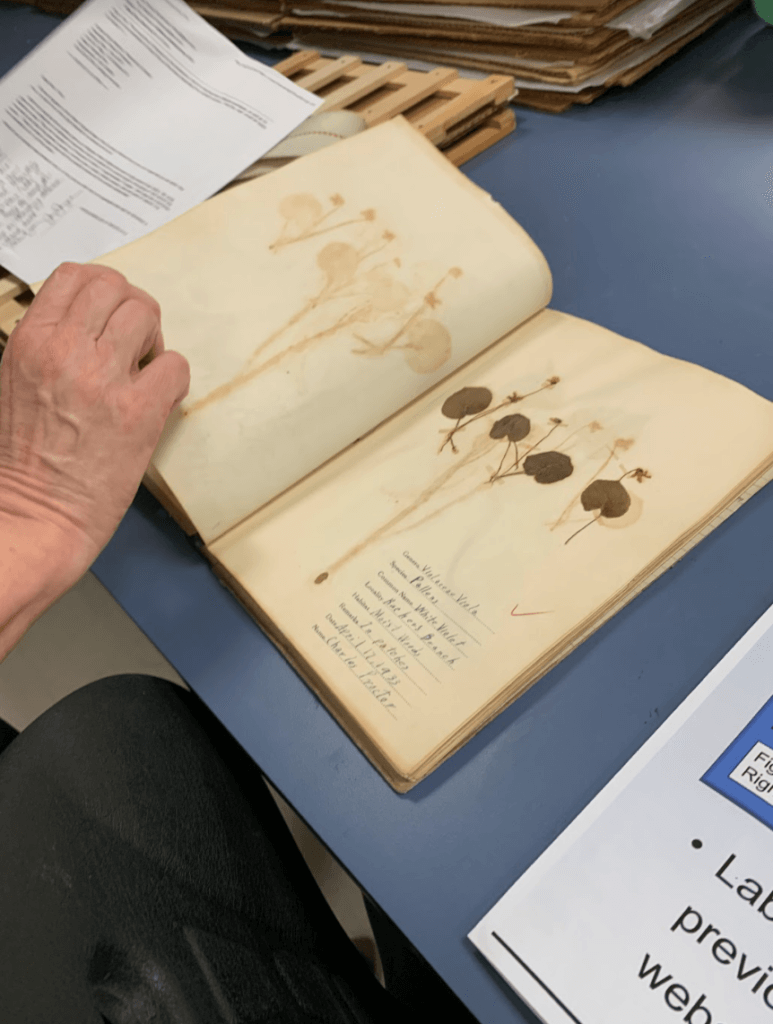
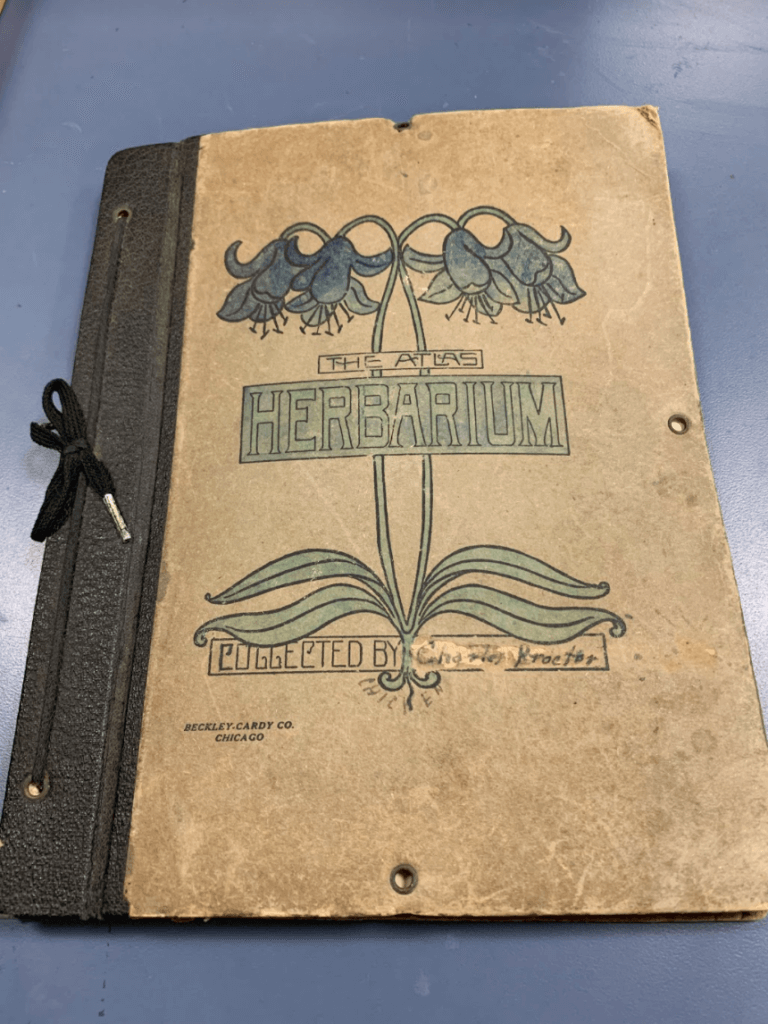
Student workers help Ford-Wentz process specimens submitted by the WVU Extension Service and the state Division of Natural Resources. “We’re basically their repository for the work that they do, whether it’s rare species monitoring, wetland delineation, assisting the public, or something else,” she says. The staff also gets submissions from the general public and from like-minded groups like the West Virginia Native Plant Society.
Upon arrival, each submission is sent to the freezer for a week or two, she explains, in the interest of killing any pests that might have hitched a ride in on the cutting. Specimens are then dried and pressed before being carefully affixed to sheets of archival paper with special gum straps. Mounted specimens are organized by family and then in alphabetical order by genus and species name in giant, moveable stacks. Each collection is like a snapshot in history, Ford-Wentz says. “This is kind of like a morgue for plants, but better. It’s a record of a plant’s life through time, with most of our species having samples from different stages of the life cycle. This really is an amazing pool of knowledge for anyone who is interested in botany or natural history, and accurately represents what is growing in the natural environment here.”
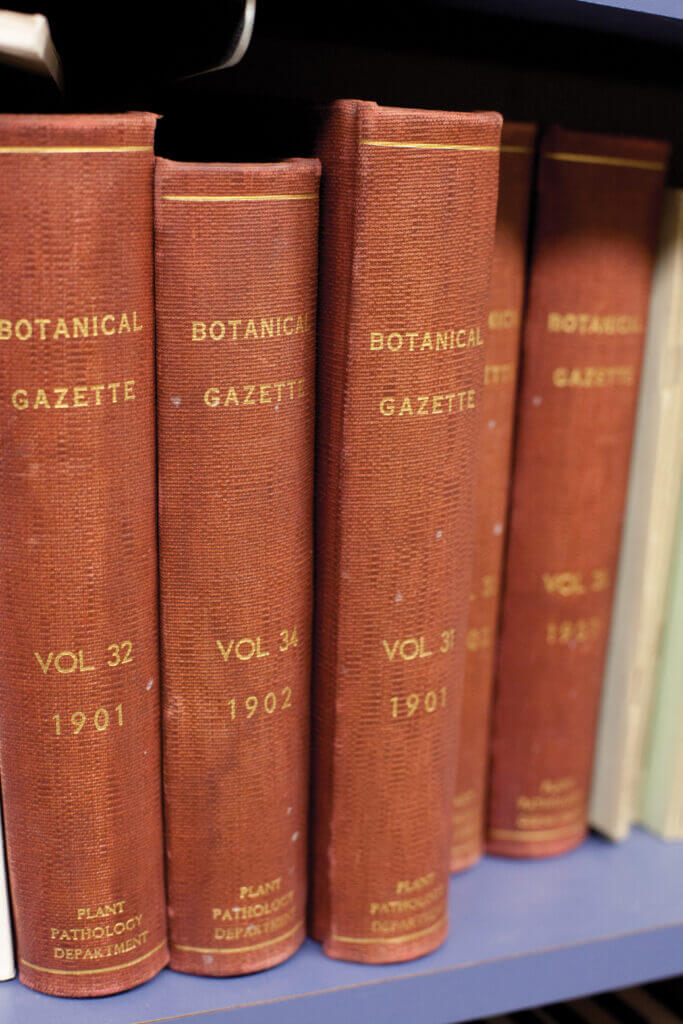
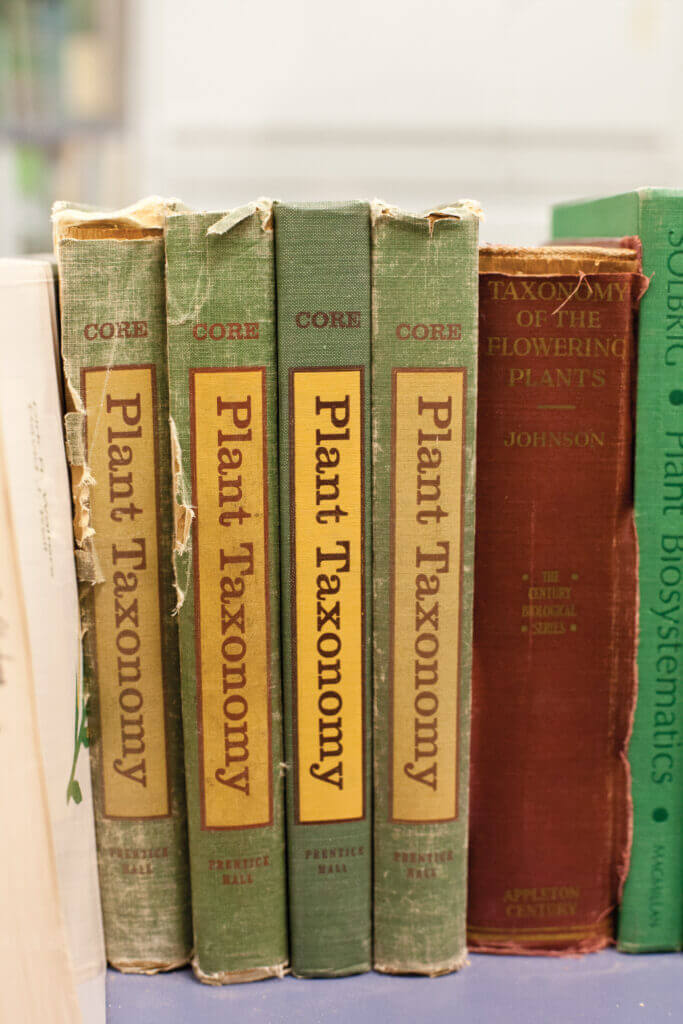
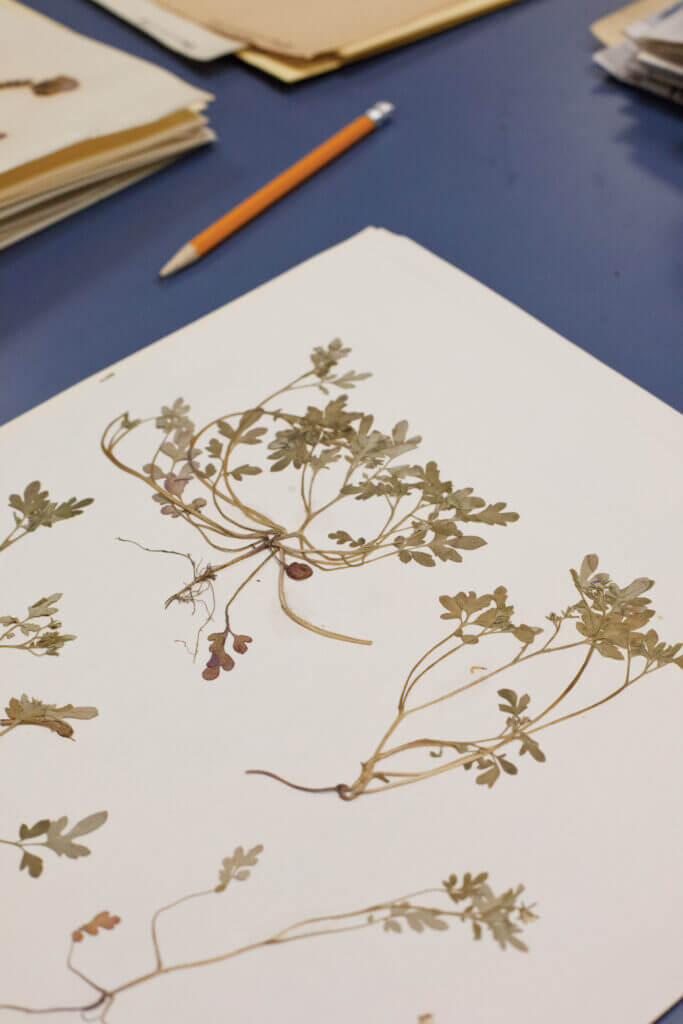
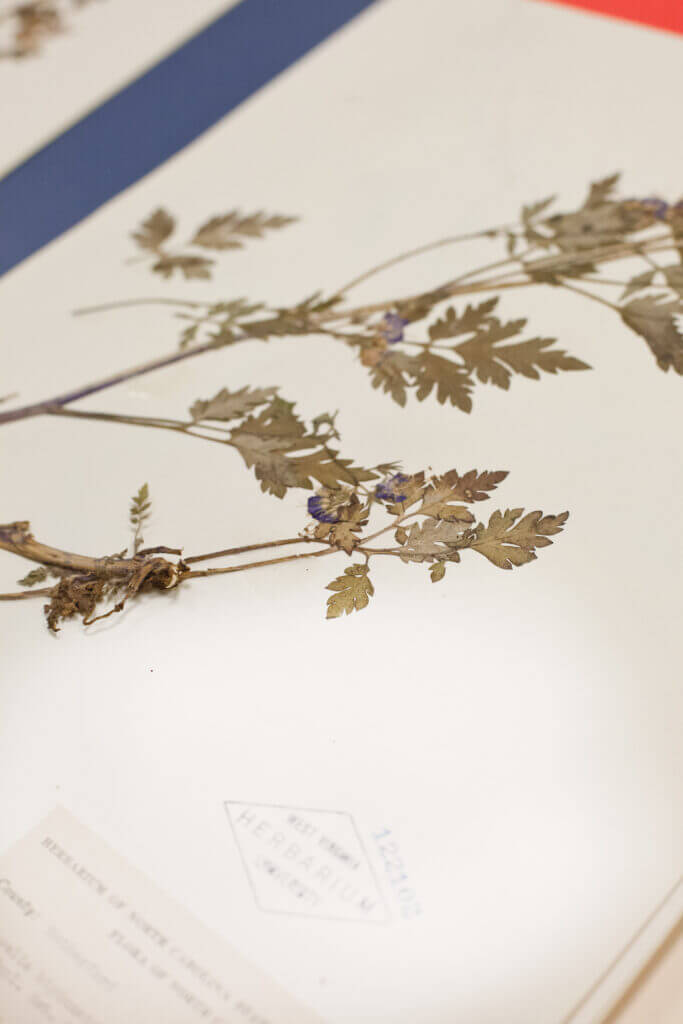
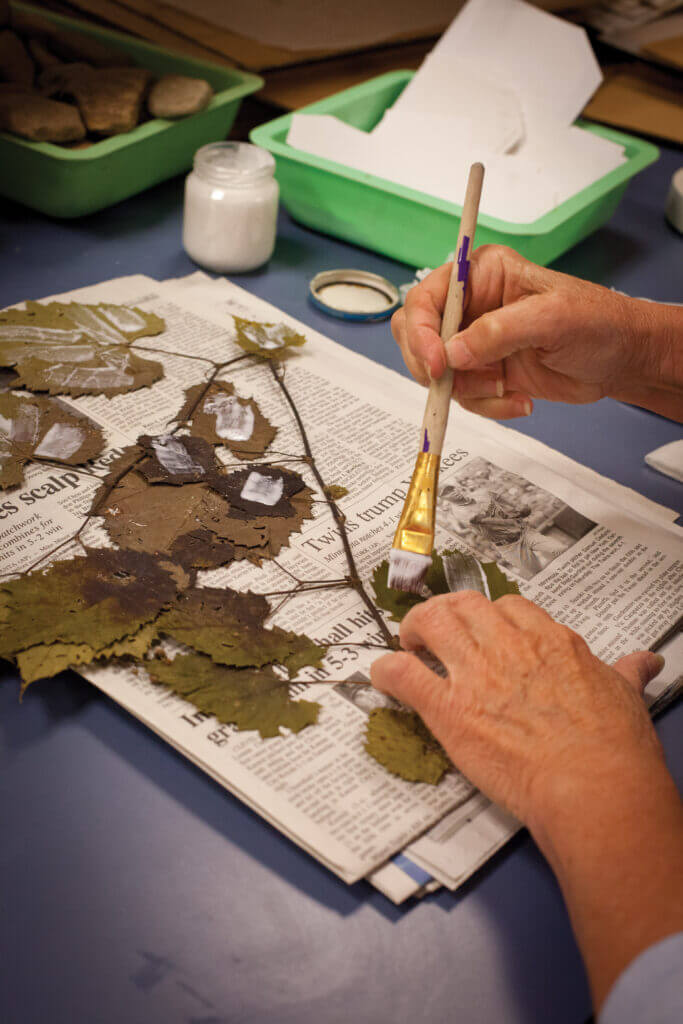
The Digital Herbarium Age
Ford-Wentz and her team, in conjunction with WVU Libraries, are working on a computer database of specimens currently in the library that makes these botanical records more accessible than ever before. They’ve logged more than 5,000 hours so far mounting specimens, photographing them, and then entering important information about each one into a central database. They’ve covered specimens in the collection dating back to the 1800s and made it possible to search more than 85,000 records by specific details. It’s even possible to search the database for broad queries, like all of the data available for a specific plant, a specific collector, or even known to grow in a specific location. The project makes remote use of the Herbarium’s records possible—a service that became even more valuable when the whole world, it seemed, went remote during the COVID-19 pandemic. It also makes it easier for the University to collaborate with researchers in faraway places who might be tackling similar problems.
No matter the delivery mechanism, whether through the portal at www.researchrepository.wvu.edu or by scheduling an appointment to visit the Herbarium to browse through the stacks in person, the facility remains an important part of the University’s land-grant mission. Knowledge and appreciation of this region’s rich biodiversity continues to grow, as do the threats to it. The Herbarium promises to be an asset for years to come, highlighting the flora that’s come before and committing to preserving everything still to come.





